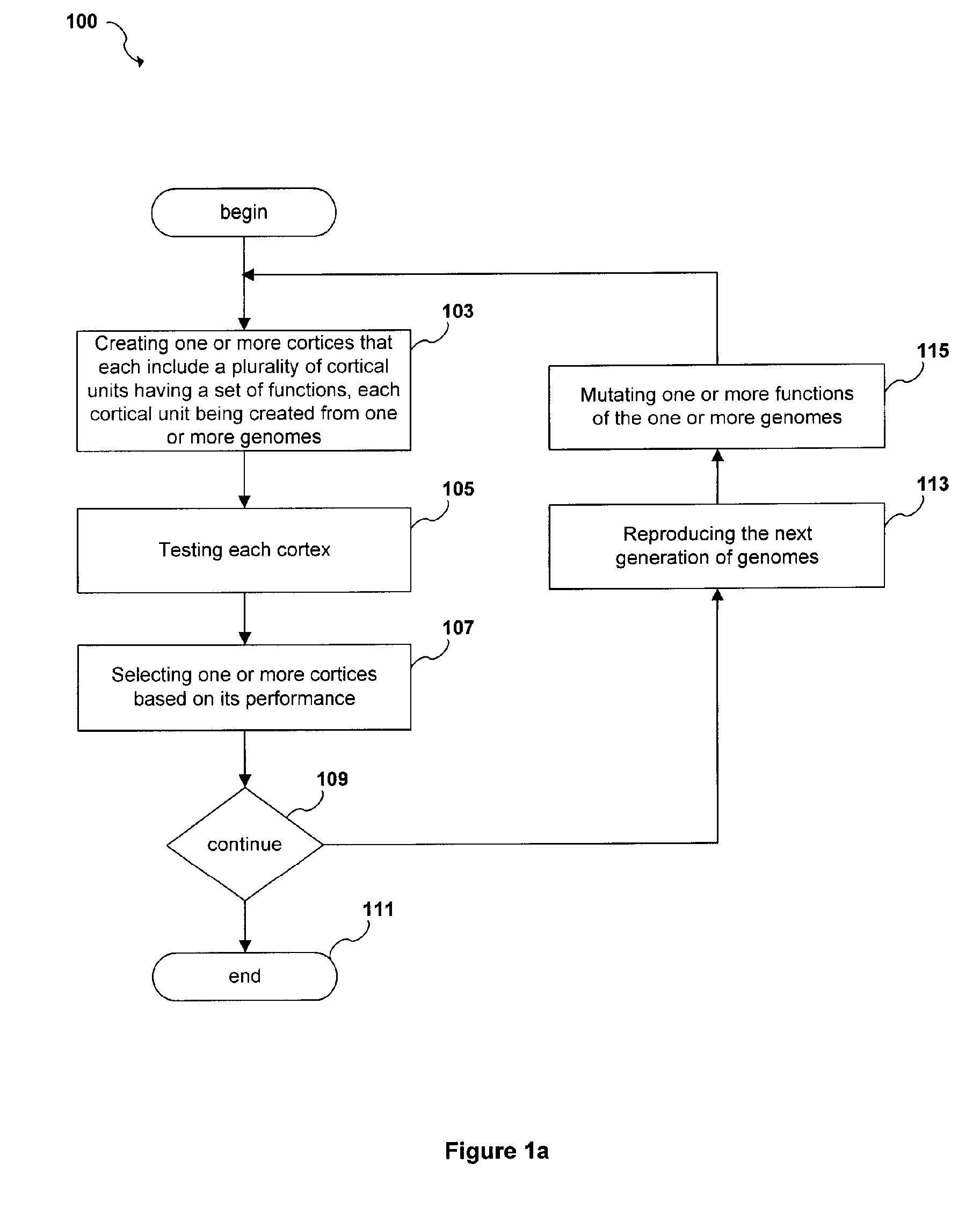Method, system and computer program for developing cortical algorithms
a computer program and algorithm technology, applied in the field of artificial intelligence algorithms, can solve the problems of not being considered intelligent so much as autistic, programming computers to mimic a particular task is unlikely to achieve genuine artificial intelligence, and human beings capable of playing a good game of chess but not being able to solve basic problems in other areas
- Summary
- Abstract
- Description
- Claims
- Application Information
AI Technical Summary
Benefits of technology
Problems solved by technology
Method used
Image
Examples
Embodiment Construction
[0025] Referring now to the drawings, wherein like reference numerals designate identical or corresponding parts throughout the several views, preferred embodiments of the present invention are described.
[0026] The present invention pertains to an effort to produce genuine artificial intelligence, instead of merely attempting to replicate a specific result of evolution or to perform specified tasks. In the present invention, evolution itself is used to develop systems that exhibit intelligence. The long-standing frustrations in artificial intelligence research are addressed by subjecting generations of adaptive cortices to a competitive, rigorous selection regime in which fitness is judged by intelligence. The result of this process is an array of interconnected cortical units, collectively known as a cortex, displaying characteristics of artificial intelligence.
I. Virtual Evolution
[0027] The quest for artificial intelligence is not a mirage: genuine intelligence has been produc...
PUM
 Login to View More
Login to View More Abstract
Description
Claims
Application Information
 Login to View More
Login to View More - R&D
- Intellectual Property
- Life Sciences
- Materials
- Tech Scout
- Unparalleled Data Quality
- Higher Quality Content
- 60% Fewer Hallucinations
Browse by: Latest US Patents, China's latest patents, Technical Efficacy Thesaurus, Application Domain, Technology Topic, Popular Technical Reports.
© 2025 PatSnap. All rights reserved.Legal|Privacy policy|Modern Slavery Act Transparency Statement|Sitemap|About US| Contact US: help@patsnap.com



